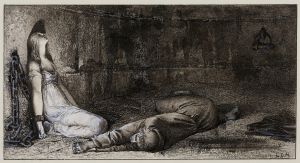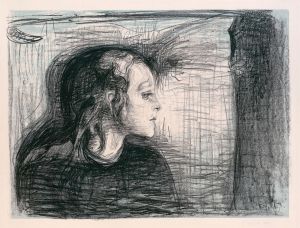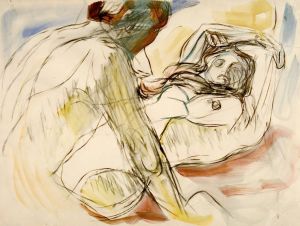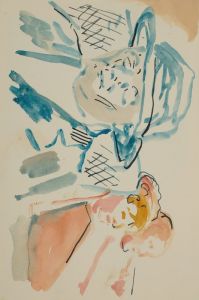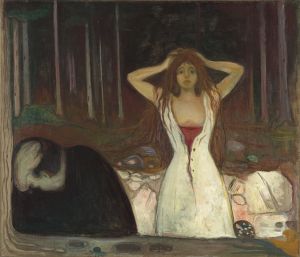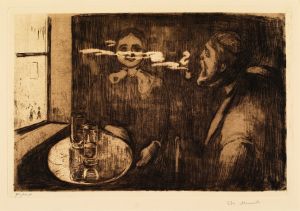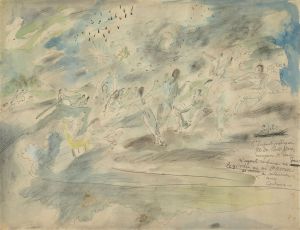
Inger in Black
A hand-painted replica of Edvard Munch’s masterpiece Inger in Black, meticulously crafted by professional artists to capture the true essence of the original. Each piece is created with museum-quality canvas and rare mineral pigments, carefully painted by experienced artists with delicate brushstrokes and rich, layered colors to perfectly recreate the texture of the original artwork. Unlike machine-printed reproductions, this hand-painted version brings the painting to life, infused with the artist’s emotions and skill in every stroke. Whether for personal collection or home decoration, it instantly elevates the artistic atmosphere of any space.
Edvard Munch, a Norwegian painter and printmaker, is renowned for his significant contribution to the Symbolist movement in the late 19th and early 20th centuries. Among his extensive body of work, "Inger in Black" is a notable painting that reflects his unique style and thematic focus. Painted in 1892, this artwork is a portrait of Munch's younger sister, Inger Munch, and is part of his exploration of personal and emotional themes.
"Inger in Black" is characterized by its use of dark, somber tones and a focus on the psychological depth of the subject. The painting depicts Inger seated, dressed in a black outfit, which contrasts starkly with the lighter background. This use of contrast is a hallmark of Munch's style, emphasizing the emotional and psychological state of the subject. The choice of black clothing can be interpreted as a reflection of the introspective and sometimes melancholic themes that Munch often explored in his work.
The composition of the painting is simple yet powerful. Inger is positioned slightly off-center, creating a sense of imbalance that adds to the emotional tension of the piece. Her expression is contemplative, with a gaze that seems to look beyond the viewer, suggesting introspection or a moment of deep thought. This focus on the inner life of the subject is typical of Munch's portraits, where he often sought to capture more than just the physical likeness of his subjects.
Munch's technique in "Inger in Black" involves loose brushwork and a somewhat muted palette, which contribute to the overall mood of the painting. The background is rendered in soft, blended tones, allowing Inger's figure to stand out prominently. This approach is consistent with Munch's broader artistic goals, where he aimed to convey emotion and psychological depth rather than adhere strictly to realistic representation.
The painting is also significant within the context of Munch's personal life. Inger was one of Munch's closest family members, and their relationship was marked by mutual affection and understanding. This personal connection is evident in the sensitivity with which Munch has portrayed her, capturing not only her physical appearance but also a sense of her inner world.
"Inger in Black" is part of a larger body of work where Munch explored themes of love, anxiety, and existential reflection. His style, often associated with Symbolism and Expressionism, was influential in the development of modern art, and his works continue to be studied for their innovative approach to depicting human emotion.
Today, "Inger in Black" is recognized as an important piece in Munch's oeuvre, illustrating his ability to blend personal narrative with broader existential themes. The painting is housed in the Munch Museum in Oslo, Norway, where it is part of a comprehensive collection of Munch's works. This museum is dedicated to preserving and showcasing the legacy of Edvard Munch, offering insight into his life and artistic journey.
Overall, "Inger in Black" exemplifies Munch's skill in capturing the complexity of human emotion through portraiture. It remains a testament to his enduring influence on the art world and his ability to convey profound psychological depth through his paintings.





